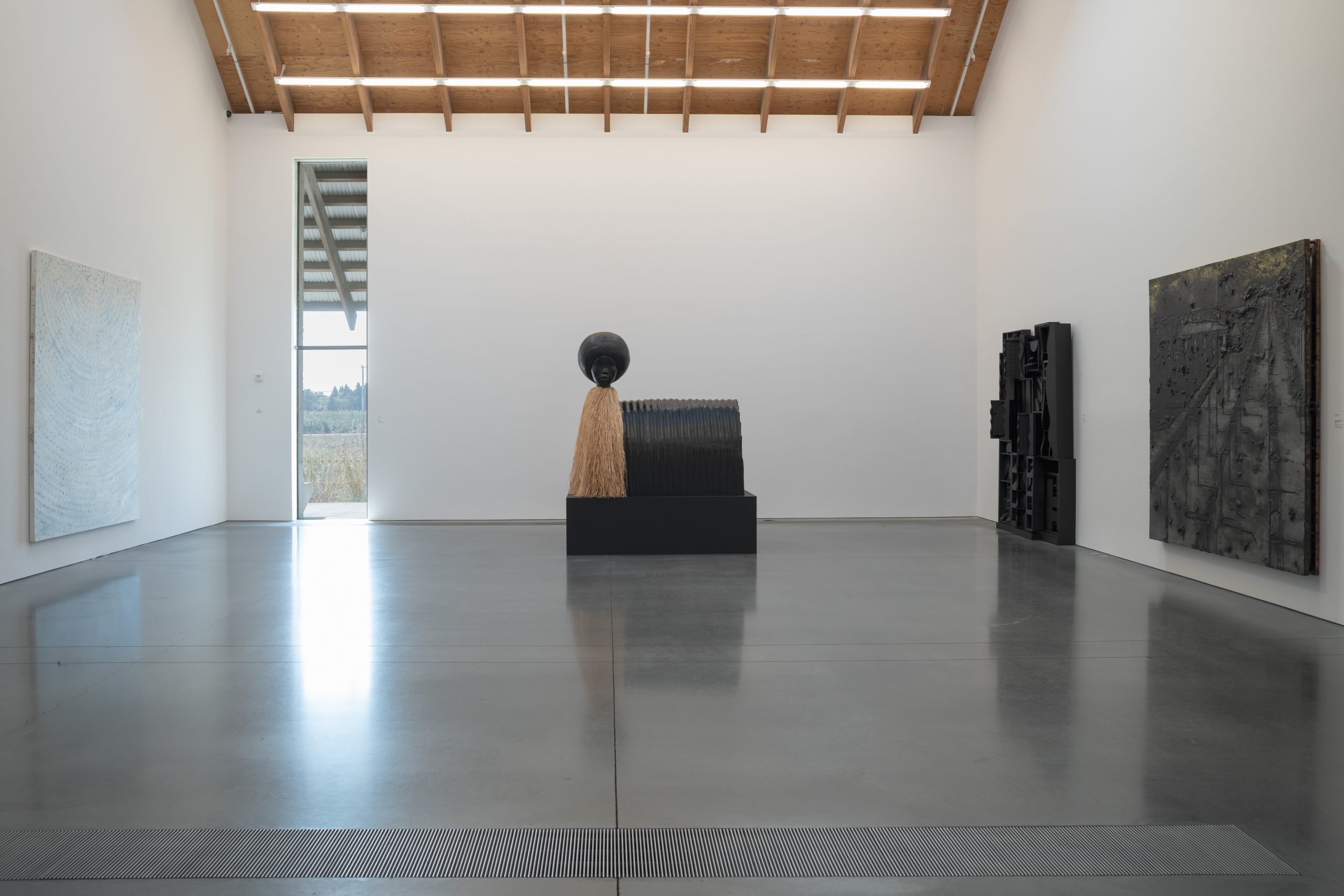MATERIAL WITNESS
Through April 24, 2022
Artists have long used materials in myriad ways. In many works of art, the substance itself can be imbued with the meaning of the work. In Simone Leigh’s (American, b. 1967) Sentinel, a corrugated Quonset hut for the body and tropical raffia palm for the skirt underscore both the resilience and femininity of the imposing female figure. The artist has said, “It’s very rare that in the public sphere you see a black person commemorated as a hero or simply elevated on a pedestal, especially a femininity that’s based on being solid as opposed to fragile—a beauty associated with mightiness and strength.” Leigh was recently chosen to represent the United States at the 59th Venice Biennale in 2022—the first Black woman to secure the commission.
Architecture of the Sky, 1990, is one of the memorials to lives lost during the AIDS crisis by Ross Bleckner (American, b. 1949). The built-up surface of a pattern of dots suggests the lesions produced by AIDS-related sarcomas, and Bleckner exploits the floating imagery to render the material surface both beautiful and terrifying. Louise Nevelson (American, b. Ukraine, 1899–1988) often allowed materials to take over and guide her process in the boxes and walls she created from dismantled furniture and ornaments. In Untitled, ca. 1970, among the artist’s all-black sculptures, Nevelson transformed an external world of found objects into a personal landscape. Donald Sultan (American, b. 1951) continues his commitment with process in Polish Landscape II Jan 5 1990 (Auschwitz), 1990, from his Disaster Paintings series. The large scale work of impressive physicality references a specific landscape freighted with its tragic history by a visceral evocation of the subject in tar and paint.




